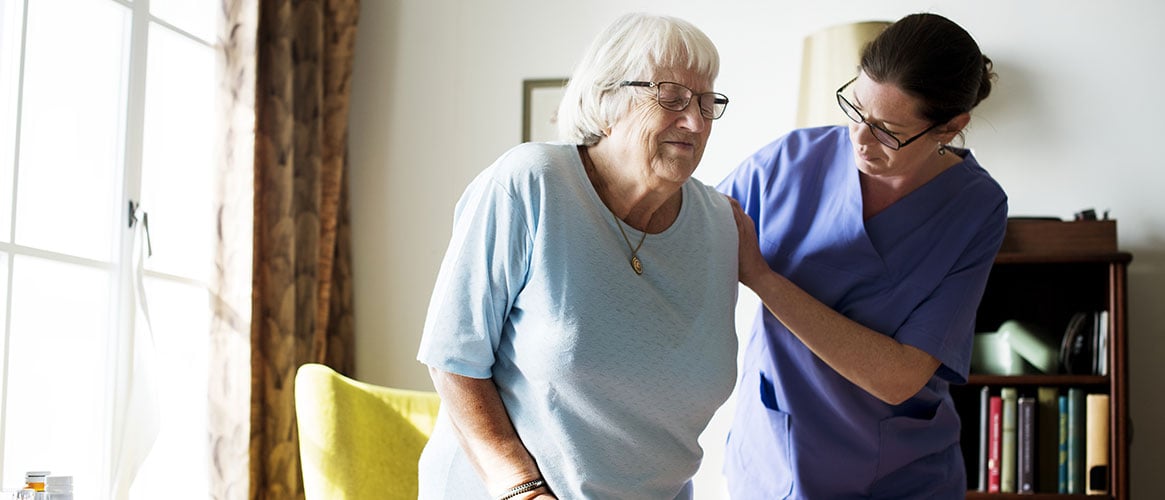Home healthcare is one of the fastest growing healthcare industries in the United States. Home health workers are employed in patient’s homes, group homes, and assisted living facilities. Working inside a patient’s home is different from working in a healthcare facility so it’s important to ensure your Injury and Illness Prevention Program (IIPP) is flexible, comprehensive, and protects your employees from hazards and injuries that can occur on the job.
What your employees need to know about being a home healthcare worker
Without the same safety precautions as a healthcare facility, the presence of injury exposures is more likely in a home. For example, loose carpeting, furniture, cluttered walkways, and even the presence of pets can pose trip hazards. In addition, pets can bite, scratch, or become aggressive.
Other safety precautions to consider include:
- Needles. Family members and patients may leave syringes and lancets exposed. This puts healthcare workers at risk of an accidental needlestick.
- Infection. Depending on the patient’s health, homecare workers may be exposed to transmission based diseases. The presence of blood and bodily fluids can also pose a risk of infection.
- Ergonomics. Transferring, bathing, and dressing patients can cause musculoskeletal disorders if workers don't position themselves properly. Mechanical lifting devices can help, but may not be available. Additionally, patient rooms may be small and the beds non-adjustable—which can result in working in awkward positions.
What your employees need to do when working in a home health setting
To minimize the risk of infection, practice standard precautions. These include:
- Use of personal protective equipment (e.g. gloves, gowns, and respirators)
- Proper handwashing
- Proper handling of needles
Tips for keeping your employees safe on the job
- Never use materials that are stored in unlabeled containers.
- Use only household strength cleaners; read and follow the instructions.
- Handle oxygen tanks carefully by storing them upright, secured to a cart or wall, and in well-ventilated areas. Be sure to keep sources of flame away from oxygen and don’t allow smoking in the same room.
Your employees also need to be aware of their surroundings for personal safety. Visiting unfamiliar neighborhoods, entering private homes, and handling patients with behavior problems can put in-home workers at risk. Your employees need to keep in contact with you so you know where they are at all times. Have your employees program your number and local emergency numbers into their phone and remind your employees not to enter a home if they see weapons that are not locked up, aggressive animals, or other security threats.
What to cover at your safety meeting for home healthcare workers
Discuss with your employees how to evaluate a client’s home. This includes ensuring the presence of safety devices such as smoke detectors and fire extinguishers. It also includes knowing where the exits are in case an evacuation is necessary as well as how to identify trip hazards, the presence of needles, and other hazards. Develop a plan to address these and other hazards with the client to help ensure a safe workplace.
For employees who need a mechanical lift to help move a patient, train them on its safe operation.
It is also important to discuss the proper ergonomic controls your employees need to use. Examples include:
- Proper lifting techniques
- Use of body mechanics and lift-assist equipment to help avoid injury
- Regular stretching before and during the work shift
Home healthcare work is an important service. Your employees allow their patients the opportunity to continue living in the comfort of their own homes while receiving the care they need. Review these safety techniques with your employees on a frequent basis, to make sure they stay safe on the job and continue to provide valuable care.

